
by Sarah Derouin Wednesday, October 18, 2017
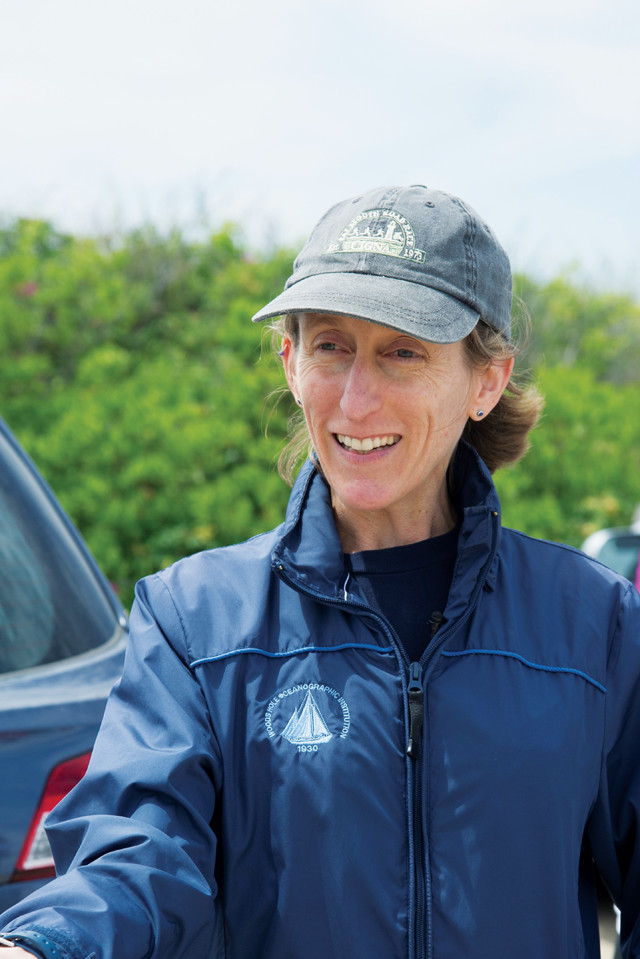
Stace Beaulieu is a senior research specialist at Woods Hole Oceanographic Institution (WHOI) in Woods Hole, Mass., who studies the biology of deep-sea ecosystems, including hydrothermal vents. Credit: Tom Kleindinst, WHOI.
People often find their way to the geosciences after a college class sparks their interest. But not Stace Beaulieu, a senior research specialist at Woods Hole Oceanographic Institution (WHOI) in Woods Hole, Mass. — she knew what she wanted to do at age 6. Beaulieu grew up in Florida and spent her childhood snorkeling and reading science magazines with pictures of deep-sea creatures that tantalized her imagination and piqued her curiosity. “I had a one-track mind pretty much from elementary school through grad school — I never changed my mind. I was so excited about learning about what was deeper. I still am today.”
Beaulieu is an international researcher, collaborating often with scientists around the world. In 2010, she was awarded a National Science Foundation RAPID grant and joined a Japanese research cruise to study larvae at hydrothermal vents within the Mariana volcanic arc and back-arc spreading center. She created and maintains a database of submarine vents around the world through InterRidge, detailing the hydrothermal activity and discovery for each location.
Beaulieu uses her deep-ocean expertise to address conservation and sustainability issues related to deep-sea mining. This past year, Beaulieu contributed to two United Nations documents: “The Ocean and the Sustainable Development Goals under the 2030 Agenda for Sustainable Development” and “The Conservation and Sustainable Use of Marine Biological Diversity of Areas Beyond National Jurisdiction.”
I sat down with Beaulieu after the American Association for the Advancement of Science meeting in Boston last February, where she and her colleagues led a session on deep-sea mining. We chatted about the burgeoning interest in deep-sea mining, how to determine its potential ecological impacts, and about the potential research opportunities it brings.
SD: How do you study the ecology of deep-sea sites that have been disturbed?__
__SB: __For the past 10 years, the lab group that I work in at WHOI has been looking at the recovery of a community at a hydrothermal vent on the East Pacific Rise that experienced a volcanic eruption. There are only a handful of places on Earth where humans essentially know “time zero” [when the environment was disturbed], and we can return again and again and look at the composition of the community over time and see whether the composition returns to what it was prior to the eruption or not: its recolonization after a catastrophic natural disturbance.
We also collect the dispersing, early life stages of the animals — larvae of worms, snails, crabs and barnacles. They disperse in the water column and they don’t swim very well. We collect the larvae and try to understand if they will settle if they happen to be floating by one of these [catastrophically altered] habitats. What is it that makes it a good habitat for larvae to settle and then grow up there? I work in the eastern and western Pacific at hydrothermal vents, and we try to sample the subset of species that manages to survive on the seafloor.
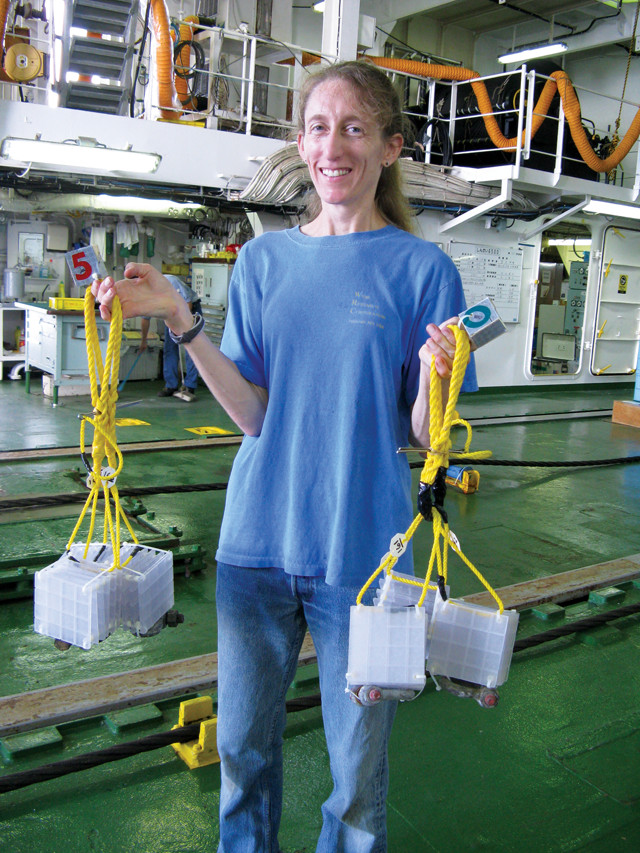
Beaulieu carries stacks of plastic panels called "sandwiches," which are used for deep-sea invertebrate colonization experiments. Credit: Susan Mills, WHOI.
SD: How do you decide what to sample?
____SB: ____We collect things based on size classes — that’s pretty important when you study the diversity of a community because there are probably more things the smaller you get. We discriminate animals as megafauna, the ones you can see with the human eye; macrofauna, ones that you could collect with a sieve pretty easily; and meiofauna, the smallest, which require a microscope to see. We collect the early life history stages, or larvae, of the larger fauna, when they are still small and in the ocean water. Our group looks at the diversity of middle-sized things: the macrofauna. If you go to the base of the hydrothermal chimney where there is more diffuse water flow, not where it’s super hot but where it’s just warm, that’s where we would collect more species of macrofauna.
SD: How did you become involved with deep-sea mining issues?
SB: About 25 years ago, right when I started graduate school, the lab where I worked was approached to investigate the animals that lived on the seafloor around the Cook Islands, a small Pacific island state that has manganese nodules in its national waters. At the time, we did not take on that project, but it alerted me to the fact that deep-sea mining was on the horizon.
Then, 10 years ago, I started working for the program called InterRidge, around the time that the regulations on prospecting and exploration for polymetallic sulfides were being developed. InterRidge mainly focuses on mid-ocean ridges and back-arc spreading centers and places where these deposits occur. While at InterRidge, I had a chance to engage with the International Seabed Authority, attending one of their meetings at the United Nations and bringing the legal advisors to WHOI in 2009.
SD: Why is deep-sea mining on the rise?____
______SB: ______There’s more awareness of the potential of the resources. That said, if you were to interview someone 20 years older than I, they would have been around when the first round of manganese nodule prospecting came around in the late ‘70s and early ‘80s — there was a flurry of activity. So, the generation of scientists before me saw the beginning of interest in deep-sea mining. Then it really calmed down for most of my career until about 2009. That was the year that the members of the deep-sea research community who study sulfides learned there were going to be exploration regulations coming out for sulfides, and we realized, “Wow, ok, we have to study this, and quickly,” because there are going to be commercial companies, as well as many nations, putting more energy into exploration.
SD: Does deep-sea mining also provide opportunities for scientists?____
______SB: ______It does, but I have to separate out the research that’s done in the U.S., because other countries have different funding models. In the U.S., when academic scientists go out to an abyssal plain or a mid-ocean ridge, we’re not exploring for resources per se. For example, NOAA has an ocean exploration program that’s very active, but it truly is exploration to understand the world. In the U.S., deep-sea exploration is more looking for knowledge than to understand the potential to supply resources. This is a distinction between basic research and applied research. In some other countries, there may be more opportunities because academic scientists receive not only basic research funding, but also applied research funding often in partnerships with government agencies and commercial entities.
SD: Are governments more interested in deep-sea mining than companies?
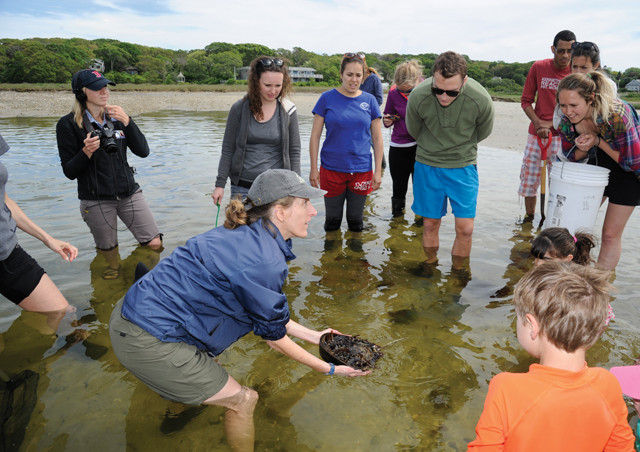
Beaulieu holds up a horseshoe crab for a group of WHOI summer student fellows on a field trip to Wood Neck Beach in Falmouth, Mass. The fellowship program gives undergraduates hands-on research experience in marine science. Credit: Tom Kleindinst, WHOI.
SB: __Yes. The main reason that governments are more interested is because of the potential for geopolitical advantage, technology development and building capacity for advanced technology. Deep-sea mining may not return that much on investment, but it may allow a country to develop more technologies that could be very useful in other purposes — it may allow a country to demonstrate some technology prowess. It’s different than a commercial company that focuses solely on the bottom line.
SD: How do countries stake a claim?__
______SB: ______Within their own waters, different countries have their own regulations. For areas beyond national jurisdictions, which includes most of the mid-ocean ridge, regulations are still being developed by the International Seabed Authority, which is the independent organization established under the Law of the Sea. In order to apply for a claim, or contract, as they are called, through the International Seabed Authority, you must be a party to that convention [on the Law of the Sea] — which the U.S. is not. This is another reason why U.S. scientists are on the sidelines.
SD: What do claims mean for researchers studying those areas?____
______SB: ______When exploration contracts first started happening for sulfides — I think it was 2010 — I wondered, if I were to propose to go to a place in the ocean that is within a claimed area, what would that mean for my research? Well, in terms of the exploration blocks [which correspond to contracts], it’s totally fine — part of the exploration is promotion of marine scientific research.
But there are no exploitation regulations yet, so scientists are going to look for them and how they might affect future research. What does it mean if a state party has this area of seafloor that is “their block”? Can I propose a cruise to go there? And what about all the data? These are the things that scientists look for because we want to promote the sharing of data, especially because it costs so much to go to these places — you want to learn what you can.
SD: You mentioned observing what happens to a deep-sea habitat after a volcanic eruption. Can those data be used to understand how species recolonize an area after mining?____
______SB: ______That’s what everyone wants to know. Some studies have been conducted on the manganese nodule habitats of the Pacific. In that case, they are looking at the fauna that lived in the sediment, which is still there after mining — there are no manganese nodules, but the sediment is still there. But we don’t have any experiments like that for polymetallic sulfides. No one has gone out and extracted [minerals] through an active or inactive vent site, which would allow us to study what happens to the habitat or the substrate after mining.
There are two types of volcanic eruption: you can have lava extrude or effuse — sort of pour out — or you can have an explosive eruption where shards of material erupt. In general [on the seafloor], it’s a slow process — it’s more lava pouring out. So what you get are animals adapted to recolonize a lava flow. A big [mineral] extracting machine is going to create a loose, talus-like substrate that is not going to be anything like a lava flow. And even though the chemical composition might be the same after mining, the physical consistency of the habitat would change and we cannot replicate that [experimentally]. You can’t actually do an experiment on how [mining] would affect recolonization. Also, it’s not like every deep-sea vent is the same. In fact, they’re very diverse geologically, so I would want an environmental impact study for each location. You can’t just study one place on Earth and say that’s what is going to happen everywhere.
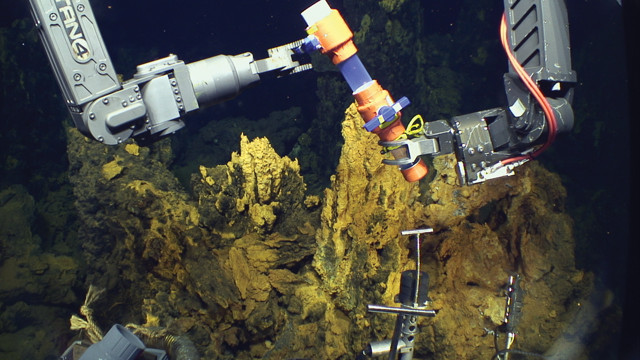
The remotely operated vehicle Jason samples a microbial mat growing on a chimney in the Urashima hydrothermal vent field in the Mariana back-arc basin in the western Pacific in 2014. Credit: ©WHOI, Submarine Ring of Fire 2014–Ironman, NSF/NOAA, Jason.
SD: What are you most concerned about as deep-sea exploration and mining progress?__
______SB: ______There needs to be more sustained oceanographic research to understand and make predictions for the future. We have such limited observations over time. In order to model a system and then predict what might happen in the future, you have to have enough observations to have confidence in your model. We just don’t have enough time-series observations to be able to understand the natural range and variability of environments that will potentially be mined.
One example is the connectivity of habitats. Seafloor habitats, such as deep-sea vents, are dispersed and separated from each other. The early life history stages of benthic animals get transported as larvae in the ocean, so the ocean currents essentially act to connect separated habitats. [Studying] connectivity requires that you have observations over time, because if you just go to a place once, you’re just getting a snapshot in time. Without having sustained long-term observations, we can’t model or make predictions, or figure out how to make a network of protected marine areas.
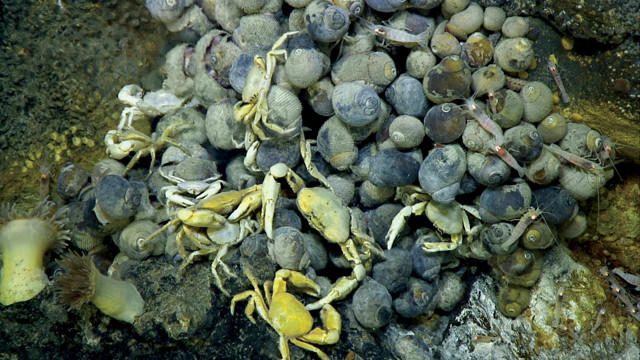
During a 2014 dive to vents in the Mariana back-arc basin, scientists saw snails, crabs, shrimp and anemones competing for space around a hydrothermal vent. Credit: ©WHOI, Submarine Ring of Fire 2014–Ironman, NSF/NOAA, Jason.
SD: On the other hand, what are you excited about with deep-sea mining?__
SB: The more people learn about the deep sea, the more they’re going to want to know about the deep sea. And that bodes well for being able to propose basic research to better understand, in my case, biodiversity and connectivity. Someone asked me, “Why can’t we just mine the deep sea? It’s out of sight, out of mind.” And my answer was, “Do you feel comfortable damaging something that you don’t know much about?” I think that if humans start to think about the life down there, maybe they’ll want to learn more — and deep-sea biologists can help them.
© 2008-2021. All rights reserved. Any copying, redistribution or retransmission of any of the contents of this service without the expressed written permission of the American Geosciences Institute is expressly prohibited. Click here for all copyright requests.